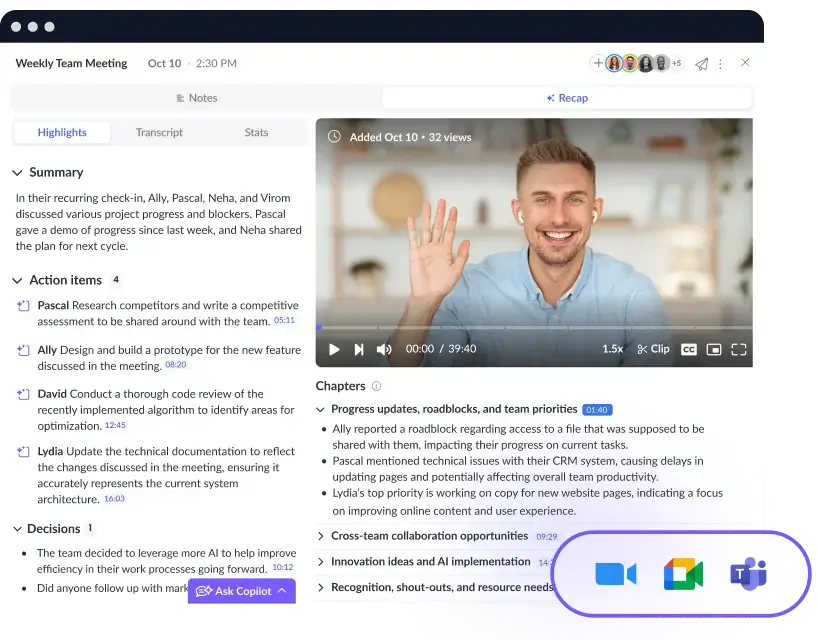Team Structure Change: This Is How to Handle It Successfully
Any change can bring up concerns, but change can also be great. Discover how to navigate organizational structure changes with ease.
Organizations are always changing – that’s how you get success and a great company culture. And since progress is all about trying new things, most teams fare best when change happens every now and again. But for real change to happen, everyone has to be on board.
Here, you’ll learn how all levels of your organization can embrace successful change management. You’ll be ready to open your arms to team structure change and pave a new beginning in a thriving work environment.
What is team structure change?
Team structure change, also known as “organizational change,” is any change that affects your department. It can also affect your entire organization if you’re on the smaller side. At its core, it’s a fairly large umbrella term, but in this piece, team structure change is primarily referring to structural changes. That can include:
- Mergers and acquisitions. When two organizations join forces – or one organization acquires another – change is part of the package. But this doesn’t need to be scary; it can be a time to take a closer look at what’s working and what needs a facelift. New players can allow for new ideas and a fresh perspective.
- Altered or added teams and departments. Not all structural change involves people coming in from outside the organization to make a difference. There can also be adjustments within existing teams and departments. These changes typically involve team members changing roles or new departments forming. They’ll come with challenges in the short term, but in the long run, they’ll better serve the organization.
- New roles or adjustments to the organization’s internal structure. Organizational change can also mean promotions and adding roles. By promoting team members and hiring new team members in their place, you can help the team grow. That growth will give them a better chance of achieving your management initiatives.

Give effective feedback
Manage team structure change by giving and receiving effective feedback. Try a tool like Fellow!

How to handle team structure change
Changes to your team’s structure can feel overwhelming, especially if your organization hasn’t made any changes in a while. Here’s how to tackle these shifts like a pro.
Tip: It involves effectively sharing information with team members and encouraging them to give feedback.
- Use Kurt Lewin’s model
- Ask for feedback
- Always listen
- Explain the change with sound logic
- Highlight the benefits
- Guide the change
- Roll out the change one department at a time
- Use the best tools available
1Use Kurt Lewin’s model
“Unfreeze, change, refreeze,” also known as Kurt Lewin’s change management model, is a popular way to handle organizational structure changes. Created by and named after physicist and social psychologist Kurt Lewin, the idea comes from reshaping a block of ice without destroying it. You melt the ice, put it into a new container, freeze it again, and voila – ice in another shape.
Lewin’s model can help you change your status quo because it shows that you don’t have to destroy your existing foundation. You just have to thoughtfully alter an area that needs changing. This process also gives your team time to adapt to changes – that’s the “unfreezing” stage. You’ll make it less likely that anyone feels blindsided.
2Ask for feedback
The “unfreeze, change, refreeze” is nothing without effective team communication. When you make it clear that every voice matters, you work wonders for employee engagement amid crazy changes. Successfully running a team means creating an equal give and take so everyone feels valued and heard. Asking for feedback shows that this is a two-way street, which can keep everyone feeling engaged and motivated.

3Always listen
A smoother structural shift can happen when you listen as much as you talk. Your team will have questions when changes are involved, and when you listen carefully, you’re more likely to give a meaningful answer. Make time to hear out your team, and everyone will be happier as everything changes.
4Explain the change with sound logic
You should back your organizational change with clear reasoning that’s easy to explain to your team. And if it doesn’t make sense, then the change itself might require another look before you roll it out. People value honesty, and they can often see through something that doesn’t add up.
5Highlight the benefits
Your team probably wants to know how the change is in their best interest. They might need reassuring – they might think that change means there’s a problem. In reality, though, your change is probably for the greater good of the organization, so highlight that.
Tell your team how they might reap the rewards of your team structure change. Maybe the change will make better use of their skills. For example, pay attention to your team members’ talents and passions. Make sure everyone is in the right place, and if not, create a safe space that encourages changes in roles and departments.
6Guide the change
Your team will always look to you to set the example, especially when it comes to team structure changes. When there are changes in departments and the management chain, then it’s on you to help guide your team during the transition. And if you have new direct reports, introduce yourself to them personally to make the transition as seamless as possible.
7Roll out the change one department at a time
A team structure change works best when you roll it out in phases. You can try the change in one department and see that it’s successful there before moving on to the next one. This way, a ton of changes aren’t happening simultaneously. Too much at once is a recipe for disaster, so take it slow and listen, learn, and revise as you go.
8Use the best tools available
Team structure change can introduce a lot of pain points, and you can best solve them with peer feedback. Of course, feedback can become a lot to keep track of, so you’ll need to use tools to keep everything in order. With Fellow, you and your team can monitor work interactions and feedback over time. This way, you can get a better sense of what’s working with this structure shift and what you need to improve.
Manage change with a helping hand
From mergers to changes in department leadership, team structure changes can raise a few concerns (and eyebrows). However, transparent management can make all the difference. That means proper communication as you keep the team in the loop and ask for feedback along the way. And if you need a few pointers when navigating the unpredictable waters of change, you know where to look.











